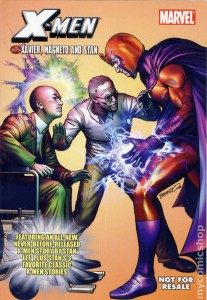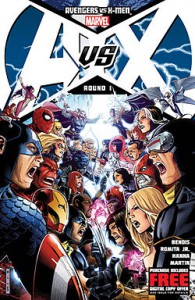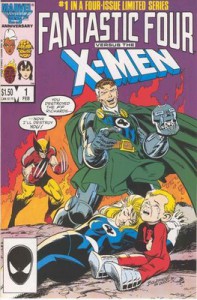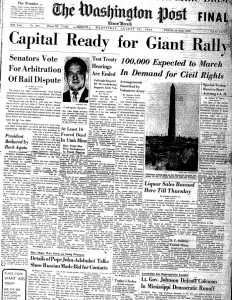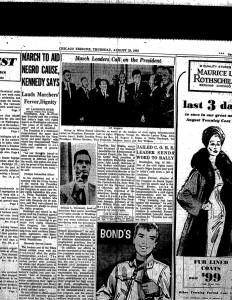Thanks in part to a grant from the Missouri Humanities Council, Ellis Library is organizing several events for this fall related to the anniversary of the American Civil War. The centerpiece of the project will be the exhibit Divided Loyalties: Civil War Documents from the Missouri State Archives, which will be on display in the Ellis Colonnade from August 12 through October 26.
Drawing on official documents and court cases, Divided Loyalties: Civil War Documents from the Missouri State Archives examines the upheaval and uncertainty that characterized Missouri during the Civil War era. The exhibit goes beyond the stories of battles and military strategy to consider the social conflict that permeated the state for the two decades that followed the Kansas Border Wars of the mid-1850s.
Divided Loyalties shows how the issue of slavery split Missouri’s white population. Though an 1861 state convention determined that the state would not leave the Union, Federal troops advanced on Jefferson City, forcing Governor Claiborne Fox Jackson, a Confederate sympathizer, and the Missouri State Guard to abandon the state capitol. The exhibit includes documents from both Missouri’s pro-southern elected state “government in exile” and the federally-backed provisional government that took its place in June 1861.
Divided Loyalties also acknowledges the active role of African Americans in the struggle for their freedom as well as their participation as Union combat troops. The exhibit examines, for example, the Dred Scott Case, the most famous of the “freedom suits,” the collective title for the hundreds of instances in which enslaved Missourians sought their freedom through the courts.
Louis Gerteis, Professor of History at the University of Missouri-St. Louis, will deliver an opening talk on September 5 at 2:00 pm in the Colonnade. Gerteis is the author of two books and several articles addressing Missouri’s role in the Civil War. The talk will be followed by a reception with live period music provided by Jane Accurso and Dierik Leonhard. This and all other events associated with this exhibit, unless specifically noted otherwise, are free and open to the public.
For those who would like to know more about other Civil War exhibits in Columbia, please visit this link http://www.dbrl.org/civilwar.
Sept. 5
Opening Reception
"The Civil War in Missouri," lecture by Dr. Louis Gerteis
2-5 p.m.
Ellis Library Colonnade
University of Missouri-St Louis professor and historian Louis Gerteis will discuss research from his new book published by University of Missouri Press. Gerties’s research shows that Missouri played an important military role in the Civil War for both the North and the South and was not just a peripheral player engaged in guerrilla fighting. Gerteis has written four books on Missouri and the Civil War. Opening reception in the Ellis Colonnade with period music by Jane Accurso and Dierik Leonhard.
Sept. 10
"Dressing a Civil War Heroine: Clothing, Gender and the Implications of Costume Change in George Caleb Bingham’s Painting, General Order No. 11"
Talk by Dr. Joan Stack, Art Curator, State Historical Society of Missouri
2 p.m.
Ellis Library Colonnade
Commemorating the 150th anniversary of the events pictured in the painting (one version owned by and on display at the State Historical Society of Missouri), Stack examines how Bingham’s choice of clothing for his female subjects reflect 19th century attitudes about gender, dress, and women’s role in the Civil War.
Sept. 11 & 17
Kids' Days
5:15 to 6:15 p.m.
Kuhlman Court
Kids are invited to hear a storyteller and see re-enactors and play games.
Sept. 19
Ride with the Devil
6:30 p.m., Free Pizza
7 p.m., Movie
Jesse Wrench Auditorium
Ang Lee directed Tobey Maguire (as Jake) and Skeet Ulrich (as Jack) in this 1999 film about two boyhood friends coming of age in Missouri at the start of Civil War.
Joanne Hearne (MU Film Studies), LeeAnn Whites (Mu History Department), Joan Stack (Curator, State Historical Society of Missouri) and Rudi Keller (Columbia Tribune) will introduce the film prior to its viewing and be available for a Q & A immediately after.
Sponsored by MSA/GPC Films Committee and MU Libraries
Sept. 26
Researching the Civil War in Government Documents
Marie Concannon
2 p.m.
Blackboard Collaborate
Join us in this online session about MU Libraries’ collection of Civil War era government documents, many of which are also available through subscription databases. Non-affiliates are welcome to take part, though they should plan to be physically present in Ellis Library for any subsequent research activities.
To join the session, go to http://tinyurl.com/myyrs4l at the appointed time and follow the prompts. Call (573) 884-3359 for technical help or assistance logging on.
October 12
Civil War Tour
The growing town of Columbia experienced no battles on its soil during the Civil War, but the war had a great influence on everyday life. This free bus tour will visit a few surviving Civil War-era structures and places where key local institutions used to be, with a final stop in the cemetery downtown. Riders can expect to get a picture of daily Columbia life during this time of great upheaval and hear stories of individual people and families.
The tour will be offered twice, once at 1:00 PM October 12, and again at 3:00 PM October 12. Both tours are scheduled to last 1 hour and 45 minutes. At both times, the start location of the tour will be the Columbia Chamber of Commerce, 300 S. Providence Road. Tour leaders will be Rachel Brekhus, Humanities Librarian, MU Libraries, and Cindy Mustard of Tiger Trolley. The ADA accessible tour bus seats 30, and the tour is free, but registration is required.
To register for the 1:00-2:45 PM tour, use this link: THIS TOUR IS FULL Click here if you wold like to be put on the waiting list: https://www.surveymonkey.com/s/QBGSKNW
To register for the 3:00-4:45 PM tour, use this link: THIS TOUR IS FULL Click here if you wold like to be put on the waiting list: https://www.surveymonkey.com/s/QBGSKNW
The free tours are made possible by the generous support of the Missouri Humanities Council and the MU Libraries.
Oct. 23
Panel Discussion
2 p.m.
Ellis Library Colonnade
The MU Libraries will host a panel discussion, "Beneath Gods and Generals: the Human Dimension of a Most Uncivil Conflict," Wednesday, October 23, at 2 pm, in the Ellis Library Colonnade. Led by a panel of historians, the discussion looks beyond the studied grandeur of a storied period to discern the impact of near-mythic personalities and legendary incidents on the lives of ordinary people. The panel includes Ms. Jen Flink, Director of the Boone County Historical Society, Dr. Debra Greene, Department Head, History, Lincoln University, Dr. Gary Kremer, Director of the State Historical Society, Dr. Wilma King, Director of the University of Missouri’s Black Studies Program, and Ken Winn, Historian. This program is free and open to the public.
Each panelist will present ideas, occurrences or individuals from the period that go beyond the predictable recitation. After this segment of the program, the floor will open to audience participation. Please plan to attend to better understand the impact of war on the lives of ordinary people and to perhaps add an anecdote from your own family’s history.
Nov. 4
Closing Reception
“The Great Heart of the Republic: St. Louis and the Cultural Civil War”
5 p.m.
State Historical Society Conference Room
Historian and professor of history at the University of Texas at El Paso, Adam Arenson will discuss his recent book, which brings a revisionist view of the entire Civil War Era (1848 to 1877) in his description of the conflict between three regions—West, as well as North and South.
Co-sponsored by MU Libraries.
Additional Exhibits
 Thanks for the interest in our first Unsolved Mystery post! We're presenting these items as great opportunities for students or faculty to do some original research – so if you'd like to work on any of these materials, let us know.
Thanks for the interest in our first Unsolved Mystery post! We're presenting these items as great opportunities for students or faculty to do some original research – so if you'd like to work on any of these materials, let us know.
 This Hebrew text is manuscript on parchment and is clearly the work of two scribes. The entire piece measures about 7 inches tall, including the handle. We assume that its small size and humble materials indicate that it was used for personal study, but that's just our conjecture.
This Hebrew text is manuscript on parchment and is clearly the work of two scribes. The entire piece measures about 7 inches tall, including the handle. We assume that its small size and humble materials indicate that it was used for personal study, but that's just our conjecture.





